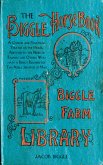By exploring all things equine, from prehistoric origins to the present, The Hawaiian Horse illuminates the contributions of the horse to transportation, freight service, and agronomy in industries of ranching, sugar, pineapple, taro, rice, and coffee production in Hawai'i. Comprehensive and deliberate, the book shows the evolution of the equine species--horse, mule, and donkey--as beasts of burden, for recreational pleasure, or as highly regarded competitive mounts. Beginning with the colorful introduction of the species, with its conquistador roots, and a history of the vaquero in Hawaiian cowboy culture, the authors take the reader on a journey through time, encountering along the way Hawaiian royalty, elegant pā'ū riders in flowing gowns, horse racing, polo, rodeo, and the military's influence during both world wars. Novice and experienced equestrians will marvel at the development of the distinctive Hawaiian saddle, described with explicit detail and illustration of its artistry, production, and utility. Early equine import and export defied sheer practicality when repeatedly confronted with issues of fundamental humane care. Pioneers of this effort were determined to succeed, and succeed they did, establishing the horse as a symbol of status. As the horse gained favor with Hawaiians, the animal's numbers grew to the point of overpopulation, with mounts seeking homes in mountains and valleys--eventually becoming wild and establishing "mustang" status similar to wild horse overpopulation in the Americas. Hawai'i's sugar industry, credited with progressive enrichment of horse quality through importation of genetic excellence, served as a model for major ranches such as Parker, Baldwin, Rice, Greenwell, and Dillingham, as they too, imported quality sires and mares. Two men stand out in this endeavor--A. W. Carter of Parker Ranch and Dr. J. C. FitzGerald of Maui. Two equestriennes also rise to the top for their fine work and contributions--Amy Rich, Hawai'i's quintessential horsemanship instructor, and Maui humanitarian, Haku Baldwin. Unique in their perspective, the authors' depth of knowledge makes this volume a fitting tribute to the Hawaiian horse and the people involved in its advancement, elevating the noble animal to the stature it rightfully deserves in the history of Hawai'i.








